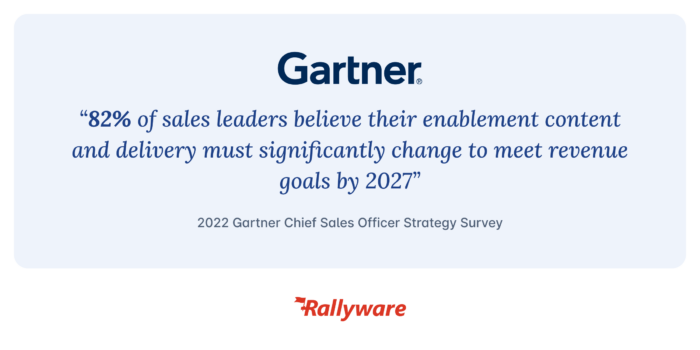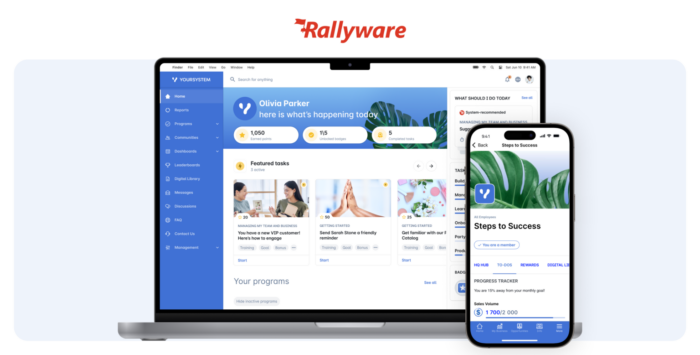The Ultimate Guide to Direct Selling Digital Transformation in 2022
Sales Enablement 3.0: How AI-Native Platforms Are Redefining Sales Performance
Sales has changed. It’s faster, noisier, and more unforgiving than ever.
Reps get one shot to make an impression. Conversations happen in seconds. Market shifts land before yesterday’s training finishes loading.
And yet, most sales enablement tools are stuck in the past.
Static LMSs. Dusty content libraries. Dashboards that track clicks, not outcomes.
The result? Content gets lost. Reps get overwhelmed. And performance stalls.
Sales is moving faster than your tools — that’s a problem. What today’s salesforces need isn’t more enablement content—they need smarter, AI-powered systems that drive action, adapt in real time, and actually improve results.
This is Sales Enablement 3.0, a new era where performance isn’t just tracked. It’s activated.
What Is Sales Enablement 3.0?
Sales Enablement 3.0 represents the next evolution in how sales teams are supported and optimized. It moves beyond content storage (1.0) and engagement tracking (2.0) into a new era of intelligent, adaptive systems that drive behavior change in real time.
- Sales Enablement 1.0 – Static content libraries
- Sales Enablement 2.0 – Engagement dashboards
- Sales Enablement 3.0 – AI-powered performance engines
Instead of measuring how many people opened a document or completed a module, 3.0 platforms focus on outcomes: what actions reps took, what changed in their performance, and how it impacted revenue.

The Rise of AI-Powered Sales Enablement Platforms
The next generation of platforms are AI-native. They don’t just host content—they activate performance through behavior modeling, data, and predictive logic.
These systems function as intelligent operating systems for distributed sales teams. They:
- Monitor performance patterns across reps, territories, and interactions
- Predict when and where to intervene
- Deliver micro-learning, incentives, or nudges in the flow of work
- Adapt based on real-world outcomes, not assumptions
“We’re no longer optimizing for content engagement. We’re optimizing for behavior—and behavior is the root of performance.”
George Elfond – Sales Enablement 3.0
From Content Management to Performance Optimization
Traditional enablement is reactive. AI-native enablement is predictive. This creates a measurable performance edge.
Instead of uploading content and hoping for usage, leaders are focusing on what actually drives sales:
- Objection handling
- Product positioning
- Closing behaviors
- Follow-up cadence
- Relationship building
These aren’t captured in content dashboards, but they’re visible in behavioral data, which AI platforms can interpret and improve in real time.
Why Sales Enablement 3.0 Is an Urgent Shift
This isn’t a future trend, it’s a present shift. AI-native platforms are already being used in industries like retail, direct selling, and wholesale brands with AI in direct selling leading the way in real-time, personalized enablement at scale.
According to Gartner, 82% of sales leaders believe their enablement content and delivery must significantly change to meet revenue goals by 2027.

And the stakes are high. As noted in Gartner’s 2025 Sales Enablement Leadership Vision:
“Overwhelmed sellers are 45% less likely to hit quota. Simplifying the seller experience is no longer a nice-to-have—it’s business-critical.”
Gartner Seller Skills Survey
Companies that embrace AI-native platforms are gaining a performance advantage:
- While others track completions, 3.0 platforms drive conversions
- While others host content, 3.0 platforms activate behavior
- While others measure engagement, 3.0 platforms optimize revenue

Expert Perspective
Sales Enablement 3.0 is more than a tech trend—it’s a strategic discipline.
“At its core, Sales Enablement 3.0 is an innovative approach focused on increasing sales productivity through a systematic, personalized, and collaborative framework designed to support buyers in a conversation economy.”
Roderick Jefferson, author of Sales Enablement 3.0: The Blueprint to Sales Enablement Excellence
As Jefferson outlines, organizations that excel in 3.0 think in systems—not silos. They blend AI with sales psychology to build enablement that adapts to the needs of both sellers and buyers.
Sales Is Evolving, Your Enablement Platform Should Too
Sales Enablement 3.0 isn’t just a rebrand of old tools. It’s a rethinking of how performance is built, measured, and sustained in a world where the pace of sales leaves no room for lag.
In today’s environment, sales conversations don’t wait for course completions. Market shifts don’t pause for LMS updates. And your reps don’t need more content—they need intelligent sales enablement software that delivers real-time guidance, adaptive coaching, and behavior-triggered interventions when it matters most.
If your platform can’t predict what reps need, personalize the delivery, and trigger action in the moment of sale, it’s not just outdated—it’s a liability—and it’s a sign your sales enablement strategy needs to evolve.
Because while your team is stuck tracking clicks and completions, competitors are activating behavior change at scale:
- Surfacing the reps who need help—before performance dips
- Nudging high-performers with next-level opportunities
- Turning sales motion into a closed-loop system of continuous improvement
As George Elfond puts it: we’re no longer optimizing for content engagement—we’re optimizing for behavior.
And behavior is the root of performance.
The gap between legacy enablement and AI-native performance systems is growing.
The only question is whether your organization is closing it or falling behind.
News and Insights on Workforce Training & Engagement
We’re among top-notch eLearning and business engagement platforms recognized for effective training and talent development, helping to empower distributed workforces
Subscribe
